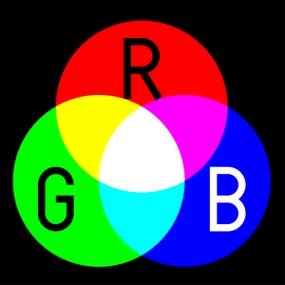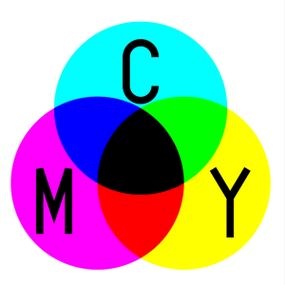| Tie-Dye - #6 - Describe colors needed to make secondary colors | ||||||||||
|
||||||||||
Stage Six of Tie-Dye -Verbally describe what primary colors of dye will be needed to make the following secondary colors. Orange, Green, & Purple. Remember that you should have a notepad or printout of your worksheet. The worksheet is located at the lower part of your Computer Screen. If you do not have a printout then take notes so you can put the information needed in the boxes. Primary Colors Are Red, Yellow and Blue, Right? Not Exactly | HowStuffWorks The website listed for HowStuffWorks can help you have a better or clearer view of secondary colors. Orange, green, and purple are called the secondary colors because they are each made by mixing two primary colors. To make - mix the following colors as so
Differentiating Between Additive and Subtractive Colors Stephen Westland, Professor of Colour Science at the University of Leeds in England breaks things down into simple terms, in an email. "We see because light enters our eyes," he says. "Light enters our eyes in two ways: (1) directly from a light source; and (2) reflected from an object. This leads to two types of colour mixing, additive and subtractive." [We have retained the British spelling of the word "colour" here.] "Both systems are accomplishing one task," says Mark Fairchild, professor and director of the Program of Color Science/Munsell Color Science Laboratory at Rochester Institute of Technology in New York. "That is to modulate the responses of the three types of cone photoreceptors in our eyes. Those are roughly sensitive to red, green and blue light. The additive primaries do this very directly by controlling the amounts of red, green and blue light that we see and therefore almost directly map to the visual responses. The subtractive primaries also modulate red, green and blue light, but a little less directly." Additive Color Mixing Hear is some facts found on the Internet. When Isaac Newton was 23 years old, he made a revolutionary discovery: By using prisms and mirrors, he could combine the red, green and blue (RGB) regions of a reflected rainbow to create white light. Newton deemed that trio the "primary" colors since they were the basic ingredients needed to create clear white light. "Additive colors are those which make more light when they are mixed together," says Richard Raiselis, Associate Professor of Art at Boston University School of Visual Arts. "A simple way to think about additive light is to imagine three flashlights projecting individual circles of light onto a wall. The shared intersection of two flashlight circles is brighter than either of the circles, and the third flashlight circle intersection will be brighter still. With each mix, we add lightness, therefore we call this kind of mixture additive light." According to Raiselis, imagining each flashlight is fitted with a transparent color filter — one red, one green and one blue — is the key to understanding additive color mixing. "When the blue flashlight circle intersects the green one, there is a lighter blue-green shape," he says. (Spoiler: We're about to get into secondary colors!) "It's cyan. The red and blue mix is lighter too, a beautiful magenta. And the red and green also make a lighter color — and a surprise to nearly everyone who sees it — yellow! So red, green and blue are additive primaries because they can make all other colors, even yellow. When mixed together, red, green and blue lights make white light. Your computer screen and TV work this way."
But the range — or gamut — of colors that can be produced from three additive primaries varies depending upon what the primaries are. Most sources will tell you red, green and blue are the additive primaries, as Newton originally proposed, but Westland says it's a lot more complicated than that. "It is often mistakenly written that RGB are optimal because the visual system has receptors in the eye that respond optimally to red, green and blue light but this is a misconception," he says. "The long-wavelength sensitive cone, for example, has peak sensitivity in the yellow-green part of the spectrum, not the red part." Subtractive Color Mixing Enter subtractive color. "Subtractive colour mixing results when we mix together paints or inks," Westland says. "It relates to all of the colours we see of non-emissive objects, such as textiles, paints, plastics, inks, etc. These materials are seen because they reflect the incident light that falls upon them."
A piece of white paper, for example, reflects all visible wavelengths. When yellow ink is added to the paper, it absorbs the blue wavelengths, subtracting them from the reflected light. This results in the perception of yellow because the paper now reflects the remaining non-absorbed wavelengths. In subtractive color mixing, colors start with all wavelengths (white) and then subtract specific wavelengths as primaries are added, contrary to the additive color process. So the distinction in color systems really comes down to the chemical makeup of the objects involved and how they reflect light. Additive color theory is based on objects that emit light, while subtractive deals with material objects like paintings. "Subtractive colors are those which reflect less light when they are mixed together," says Raiselis. "When artists' paints are mixed together, some light is absorbed, making colors that are darker and duller than the parent colors. Painters' subtractive primary colors are red, yellow and blue. These three hues are called primary because they cannot be made with mixtures of other pigments." So, Crayola and Google aren't wrong — in the material world, red, blue and yellow are the primary colors that can be combined to create additional colors of the rainbow. But if you're talking about anything tech-related (as most of us are these days), remember that the primary colors for TVs, computer screens, mobile devices and more, all subscribe to Newton's light-emitting color system, so their primary colors are red, green and blue.
Please listen to the Video for the needed information for step 6 on worksheet.
|
||||||||||
About Me | Contact Me | Site Map
Property of Mr. D - 2024

